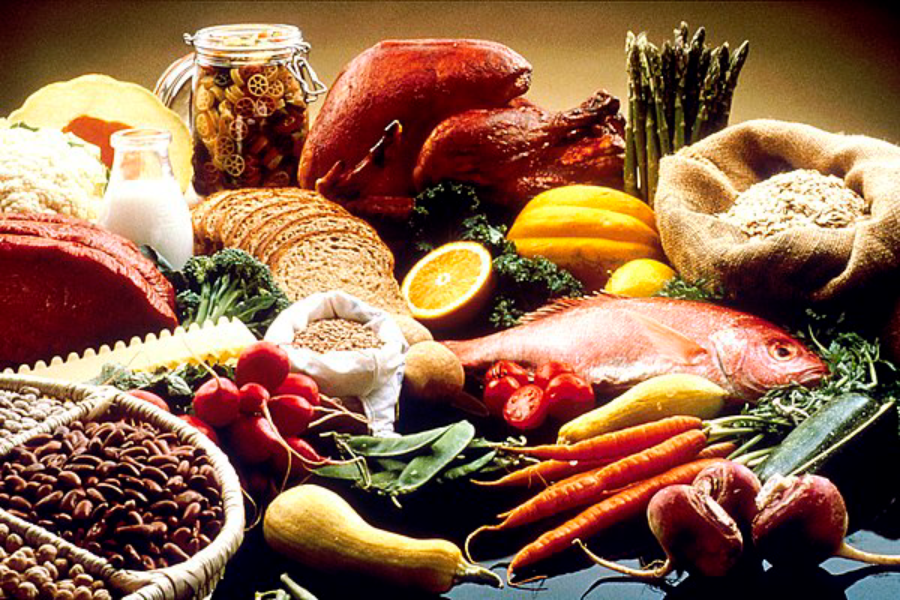

Food is any substance ingested by an organism for nutritional purposes. Food is often of plant, animal, or fungal origin and provides necessary nutrients like carbs, lipids, proteins, vitamins, and minerals. The substance is consumed by an organism and incorporated by its cells to produce energy, sustain life, or stimulate growth. Different animal species have different feeding behaviors that meet the needs of their metabolisms and have evolved to fill a specific ecological niche in specific geographical settings. Table is set with red meat, bread, spaghetti, vegetables, fruit, fish, and beans.

Omnivorous people are extremely versatile and have evolved to get food in a variety of habitats. Cooking is the most common way humans prepare food for consumption. The industrial food sector provides the vast majority of the food energy necessary, producing food through intensive agriculture and distributing it via complicated food processing and distribution systems. This conventional agriculture system is primarily reliant on fossil fuels, making the food and agricultural systems important contributors to climate change, accounting for up to 37% of global greenhouse gas emissions. The food system has far-reaching social and political consequences, including sustainability, biological diversity, economics, population expansion, water supply, and food security.
Food is any substance taken to supply nutrition and energy to an organism. Animals take it orally for growth, health, or enjoyment, whether it is raw, processed, or prepared. Food consists primarily of water, fats, proteins, and carbohydrates. Food can contain minerals (such as salts) as well as organic components (such as vitamins). Plants, algae, and some microbes use sunlight to produce their own nutrients. Water can be found in a variety of foods and is considered a food in and of itself. Water and fiber are low in energy density, or calories, whereas fat is the most energy-dense component. Plants and animals also require some inorganic (non-food) components to function properly.
Human food can be classed in a variety of ways, either based on its content or how it is produced. The number and composition of dietary categories can change. Most systems categorize foods into four classes based on their origin and nutritional function: vegetables and fruits, cereals and bread, dairy, and meat. Studies on diet quality categorize foods as whole grains/cereals, refined grains/cereals, vegetables, fruits, nuts, legumes, eggs, dairy products, fish, red meat, processed meat, and sugar-sweetened beverages. The Food and Agriculture Organization and the World Health Organization use a system with nineteen food classifications: cereals, roots, pulses and nuts, milk, eggs, fish and shellfish, meat, insects, vegetables, fruits, fats and oils, sweets and sugars, spices and condiments, beverages, foods for nutritional purposes, food additives, composite dishes and savoury snacks.
